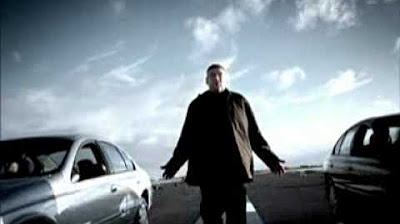Average speed for the entire journey - Solved numerical
Summary
TLDRIn this video, a biker embarks on an adventure, climbing a mountain at 1 km/h and descending at 9 km/h. The question posed is to find the biker's average speed for the entire journey. The video explains why simply averaging the speeds is incorrect and guides viewers through the correct formula for average speed, emphasizing the importance of considering both distance and time. The correct average speed turns out to be 1.8 km/h, as the biker spends more time traveling at the slower speed. The lesson focuses on avoiding common mistakes and applying the proper method for solving average speed problems.
Takeaways
- 😀 The average speed is calculated using the formula: Total Distance / Total Time.
- 😀 Simply averaging the two speeds (1 km/h and 9 km/h) will not give the correct answer.
- 😀 The mistake of averaging speeds assumes that the time spent going up and down is the same, which is not true.
- 😀 The biker travels much slower uphill (1 km/h) and much faster downhill (9 km/h), meaning more time is spent uphill.
- 😀 When time is unequal for both parts of the journey, the average speed shifts towards the slower speed.
- 😀 The correct approach is to calculate the total distance and total time separately, then use the average speed formula.
- 😀 By assuming the distance traveled is 'd', we can calculate time for each leg of the journey.
- 😀 The total distance is 2d (up and down), and the total time is d + d/9 for uphill and downhill respectively.
- 😀 The correct average speed, when calculated, is 1.8 km/h, not 5 km/h.
- 😀 The result being closer to 1 km/h reflects that more time was spent traveling at the slower speed of 1 km/h.
- 😀 The key lesson is that average speed is not just the arithmetic average of two speeds, but depends on the time spent at each speed.
Q & A
What is the main objective of the problem presented in the video?
-The main objective is to calculate the average speed of a biker boy who travels uphill at 1 km/h and downhill at 9 km/h.
Why is averaging the speeds of 1 km/h and 9 km/h incorrect?
-Averaging the speeds is incorrect because it assumes that the time taken to travel uphill and downhill is the same, which is not true. The biker spends more time going uphill at the slower speed.
What is the correct formula for calculating average speed?
-The correct formula for average speed is total distance divided by total time.
Why can't we directly use the given speeds to calculate the average speed?
-We cannot directly use the given speeds because we are not provided with the times or distances, and the time taken for uphill and downhill travel is different.
What assumption can be made to solve the problem?
-We can assume the distance traveled uphill and downhill is the same, denoted as 'd'. This allows us to calculate the total distance as 2d.
How is the total time for the journey calculated?
-The total time is the sum of the time taken to go uphill (t1) and the time taken to go downhill (t2). The time for uphill is d/1 (since the speed is 1 km/h), and the time for downhill is d/9 (since the speed is 9 km/h).
What is the simplified expression for the total time?
-The total time is expressed as t1 + t2 = d + d/9, which simplifies to 10d/9.
How is the average speed derived from the total distance and total time?
-The average speed is calculated by dividing the total distance (2d) by the total time (10d/9), resulting in an average speed of 1.8 km/h.
Why is the average speed of the biker boy less than 5 km/h?
-The average speed is less than 5 km/h because the biker spends more time traveling uphill at the slower speed of 1 km/h than he does traveling downhill at the faster speed of 9 km/h.
What lesson does the video teach about calculating average speed in similar problems?
-The video teaches that averaging speeds without considering the time taken for each part of the journey is incorrect. The correct method is to use the formula for average speed: total distance divided by total time.
Outlines

هذا القسم متوفر فقط للمشتركين. يرجى الترقية للوصول إلى هذه الميزة.
قم بالترقية الآنMindmap

هذا القسم متوفر فقط للمشتركين. يرجى الترقية للوصول إلى هذه الميزة.
قم بالترقية الآنKeywords

هذا القسم متوفر فقط للمشتركين. يرجى الترقية للوصول إلى هذه الميزة.
قم بالترقية الآنHighlights

هذا القسم متوفر فقط للمشتركين. يرجى الترقية للوصول إلى هذه الميزة.
قم بالترقية الآنTranscripts

هذا القسم متوفر فقط للمشتركين. يرجى الترقية للوصول إلى هذه الميزة.
قم بالترقية الآنتصفح المزيد من مقاطع الفيديو ذات الصلة

Intro to relative velocity | Class 11 (India) | Physics | Khan Academy

Stopping Distance

Relative Motion Review— Sine and Cosine Law Solution

Conversión de unidades de física | Unidades de Velocidad | Ejemplo 1

Tesla Optimale Geschwindigkeit Langstrecke

TCS NQT - 20th March 2025 Questions Paper discussion #tcsnqt2025 #cvcorp
5.0 / 5 (0 votes)
